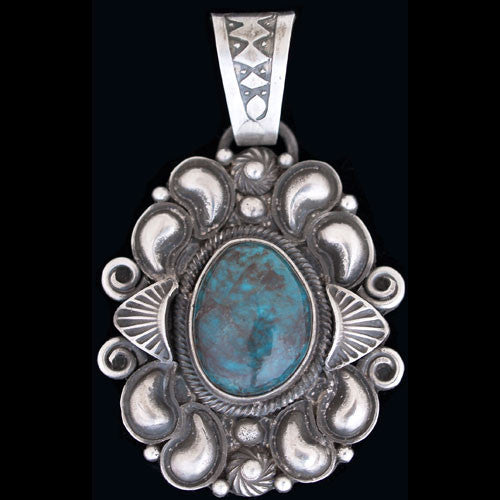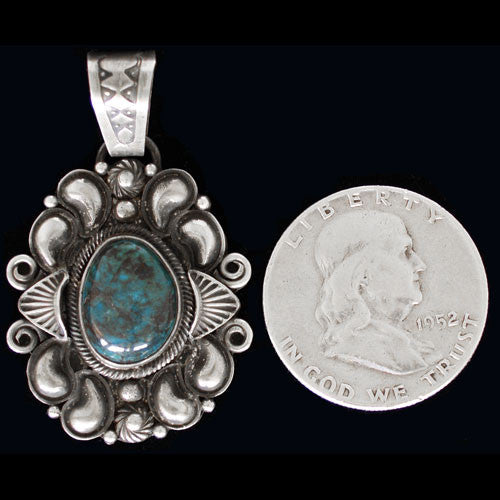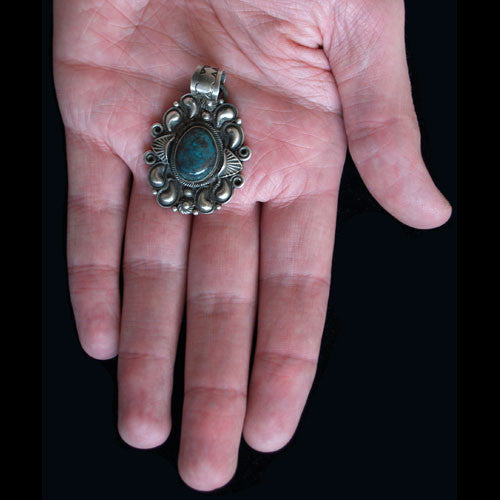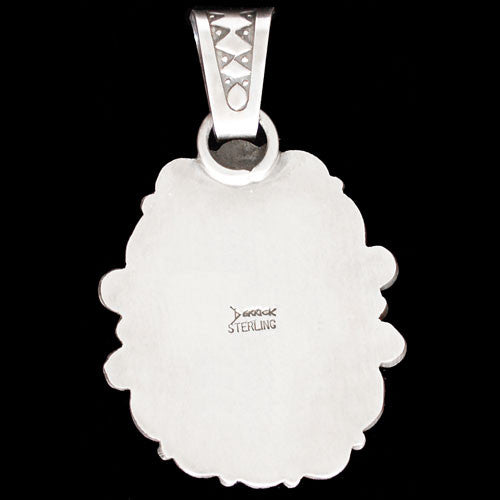




Navajo Bisbee Turquoise Pendant - Derrick Gordon (#22)
$525.00
Artist: Derrick Gordon
Navajo Jewelry
1 1/4" x 2 1/8"
We have had this cabochon of high grade natural Smoky Bisbee put away since the mid-1980s, just waiting for the right artist to set it. As it turns out, Navajo artist Derrick Gordon was just the man for the job. Derrick placed the stone in an old style "Bumped Out" setting that presents it perfectly. This pendent represents the workmanship of a top artist and features an excellent piece of high-end Bisbee turquoise.
We offer a 100% satisfaction guarantee on every purchase.
Bisbee Turquoise
Bisbee turquoise jewelry is highly coveted by collectors worldwide. The signature look for Bisbee turquoise is a dark lavender blue color with a deep chocolate brown to black matrix. Some of the most distinctively recognizable Indian jewelry has been set and photographed containing classic Bisbee turquoise. As with all turquoise, there is a wide variety of quality from the Bisbee mine where color and matrix patterns can vary a great deal.
The most productive period of the Bisbee turquoise mine was the 1950's and 1960's. The mine has been closed since the early 1970's and is currently owned by Phelps Dodge Corp. Bisbee Mine. Arizona, Cochise County. Turquoise is a copper compound and, in the case of the Bisbee mine, is found in the open pit copper mine known as the Lavender Pit. At this mine, it is typically found as stringers up to a few inches wide; as small nugget-like masses in granite and quartzite; or as minute stringers in massive pyrite.
About the artist:
At the age of nineteen, Derrick Gordon sat down at the bench with his uncle, Delbert Gordon, and a promising new career was launched. Derrick was born and raised in Gallup, New Mexico. He came into this world in 1971, but it was not until 1990 that he began to bless us with his unique style of Navajo silver jewelry.
Related legends:
Silversmith Work
When and how the Navajo acquired the art of working metals is unknown but there are reasons for supposing that it was introduced among them, or at least more developed and improved upon by them, since the time they have occupied their present country?
